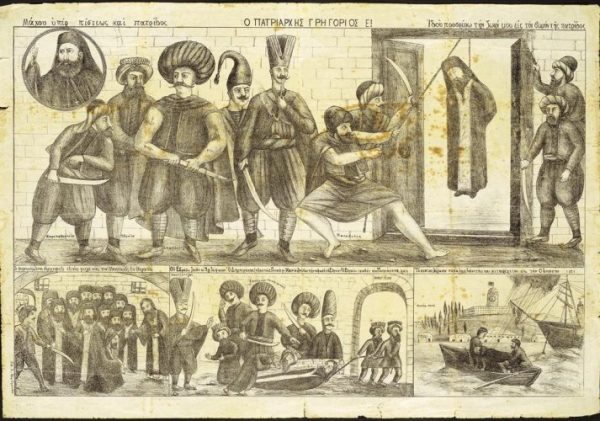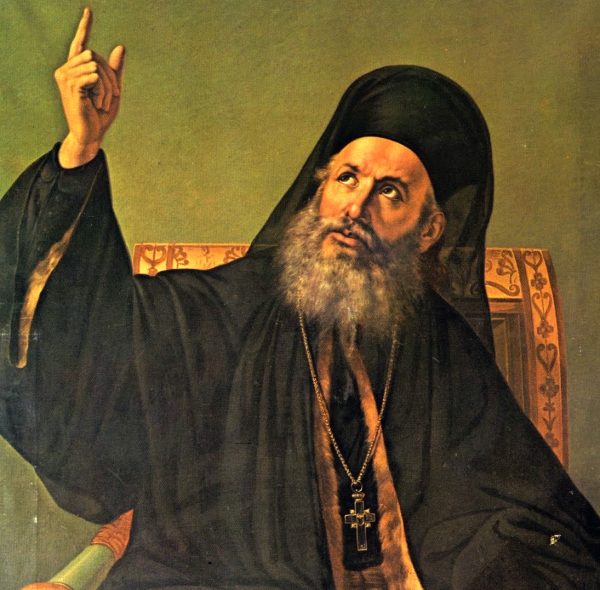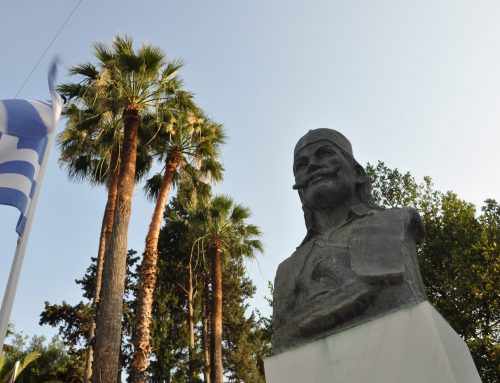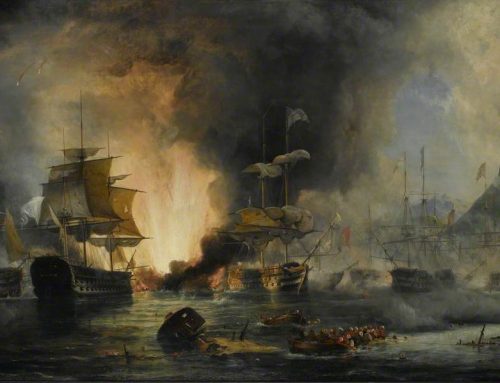
On Easter Day, April 10, 1821, the Sultan sentenced the elderly Patriarch Gregorios V from Dimitsana to death by hanging. He was held liable for the Greek Revolution. On April 18 [or 22], 1821, his predecessor, Patriarch Cyril VI, was also executed by hanging in Adrianople. Subsequently, numerous Bishops were hanged in Constantinople, Thessaloniki, and other towns.
The holy relic of Patriarch Gregorios was thrown to the Bosphorus and was found floating there by a Cephalonian sea captain called Sklavos. He translated it to Odessa of Russia (today Ukraine), where it was interred in pomp. The funeral oration was delivered with unrivalled rhetorical intensity by Protopresbyter Constantinos Ecomonos from among the Economoi (Treasurers of the Patriarchate). In 1871 his relic was translated to Athens and today is preserved in the Holy Cathedral of Athens.
 Because Gregorios V has been wronged by a part of the historians, may we quote from a witness which does justice to the patriotic action of the Patriarch and, by the same token, of Metropolitan Ghermanos of Old Patras. It is a report sent by the chargé d’affaires of the Netherlands in Constantinople regarding the execution of Gregorios V by hanging. The document is dated April 13/25, 1821 (the double date being due to today’s dating according to the Old and the New Calendar) and was discovered by a Greek academic, Prof. Gheorghios Zoras (who published it in his book entitled “The hanging of Patriarch Gregorios V in a Report of the Dutch chargé d’affaires of Constaninople”, Athens 1976, pp. 13-14).
Because Gregorios V has been wronged by a part of the historians, may we quote from a witness which does justice to the patriotic action of the Patriarch and, by the same token, of Metropolitan Ghermanos of Old Patras. It is a report sent by the chargé d’affaires of the Netherlands in Constantinople regarding the execution of Gregorios V by hanging. The document is dated April 13/25, 1821 (the double date being due to today’s dating according to the Old and the New Calendar) and was discovered by a Greek academic, Prof. Gheorghios Zoras (who published it in his book entitled “The hanging of Patriarch Gregorios V in a Report of the Dutch chargé d’affaires of Constaninople”, Athens 1976, pp. 13-14).
Thus, the Dutch diplomat Gasparo Testa wrote the following in his report:
“This leader of the Church by the name of Gregorios was held accomplice and main instigator of the conspiracy of the Greeks. Born in the Pelponnese and wishing to conceal his ‘game’ from the eyes of the Government in the best possible manner, he had vouched for the Metropolitan of Patras, when the latter had been held liable for instigation of the Revolution in the Peloponnese. Once his own involvement had been confirmed through conclusive proofs and documents, the Sultan imposed on him the sentence incurred by his felony. The declaration below, attached to the dead body, will inform your Excellency of the charges which led him to the gallows”.
We learn, therefore, that the Sultan and the foreign diplomats were aware of the patriotism of Gregorios V and understood that the repudiation of Ypsilantis’ rebellion was a wile on his part. The Saint and Patriarch sacrificed himself in order to save hundreds of thousands of Greeks from slaughter.
Photograph no. 1 : The execution of Patriarch V by hanging, lithograph, Athens, Benaki Museum.
Photograph no. 2: Ecumenical Patriarch Gregorios V, Martyr of the Nation (1749-1821). He remained loyal to his post in order to protect his flock. Athens, National Historical Museum.




